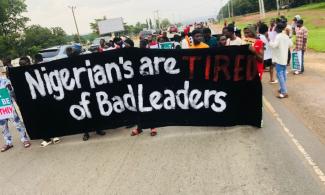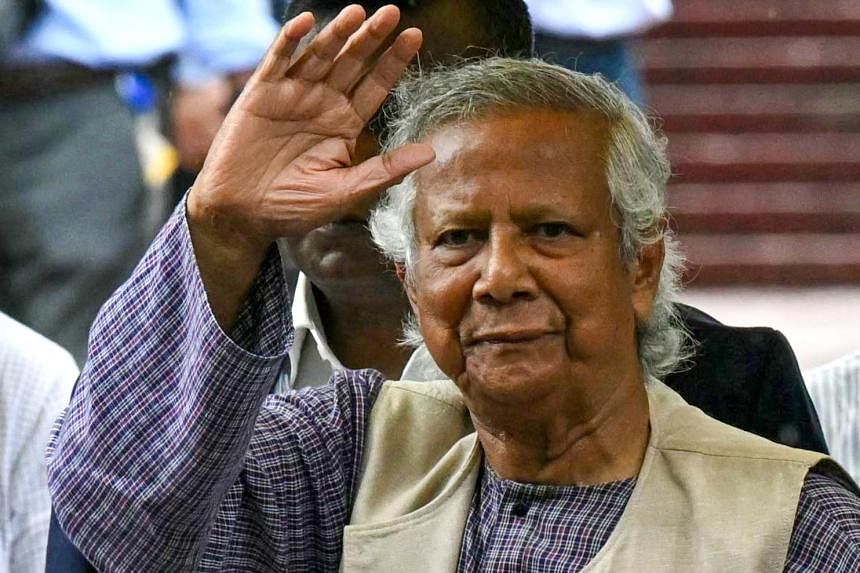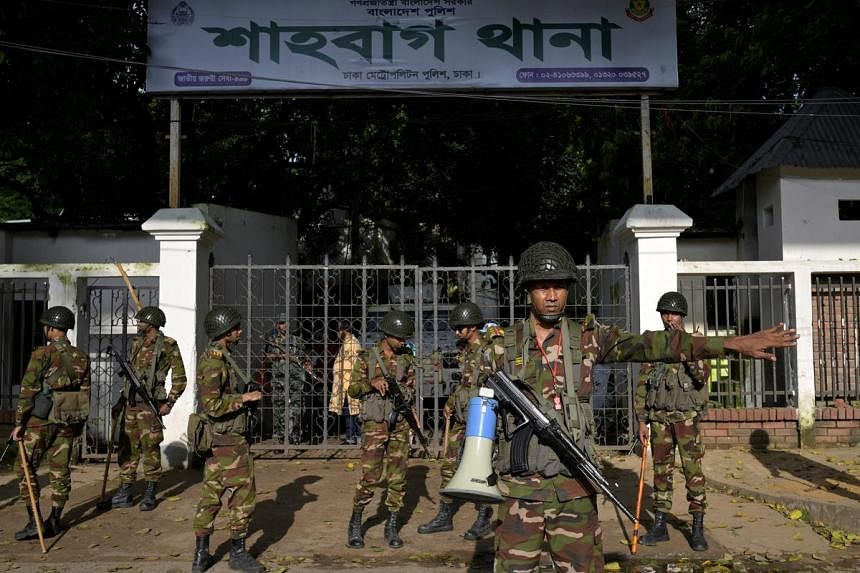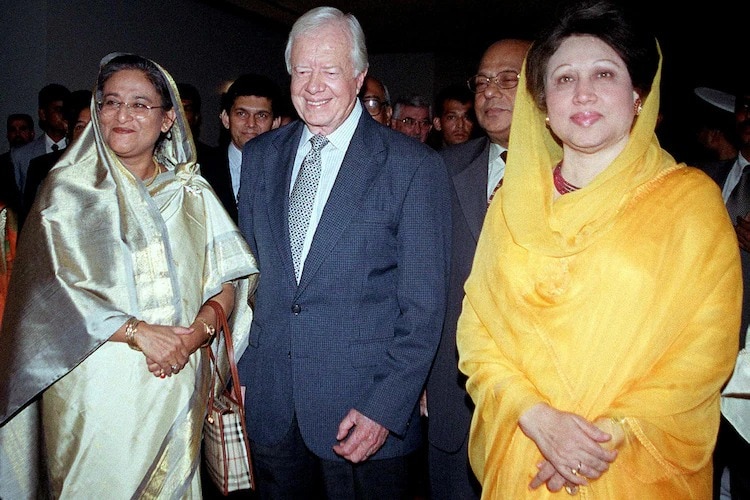Migrant workers sent $650bn overseas last year – what it means
People living abroad are sending more money to their families at home, but what types of money transfer services are available and how do they work?
Cash is received at a remittance centre in Makati City, Metro Manila, Philippines, after being sent by a Filipino working abroad [File: Eloisa Lopez/Reuters]
By Priyanka Shankar
Published On 10 Aug 2024
Mina Hamid*, who hails from Kabul, Afghanistan, and moved to the Netherlands at the age of 11, says she will never forget the first time she sent money to help her family members back home.
“I was in my late teenage years, and Afghanistan was reeling under the impact of natural disasters and conflicts, making it hard for my extended family members to afford basic necessities. So I began sending between 20 and 30 euros [$21 to $32] occasionally – money I earned from my student job – seeking to support them,” Hamid told Al Jazeera.
Keep readinglist of 3 itemslist 1 of 3
Tunisia: The migration traplist 2 of 3
International students risk immigration status to engage in Gaza protestslist 3 of 3
At least 11 people dead after two shipwrecks in the Mediterranean Seaend of list
The 36-year-old, who now lives and works for the European Union in Belgium, continues transferring money every three months to her extended family members in Afghanistan.
“The man of the house works as a security guard and his wife is a teacher, but working conditions are hard and wages are low. Together, they earn around 200 to 300 euros [$217 to $325] a month. So the money I send covers their apartment’s rent, which is about 150 euros [$163] in Kabul and gives them the chance to spend their wages on food, clothes and other items their two children might need,” Hamid said.
Like Hamid, millions of migrants around the world engage in the practice of sending money or in-kind transfers known as remittances to their family members or communities in their countries of origin.
Remittances have grown substantially over the past two decades, rising from about $128bn in 2000 to $831bn in 2022, according to the World Bank.
In June, the World Bank reported that remittances to low and middle income countries alone reached an estimated $656bn last year and surpassed foreign direct investment, which are investments made by companies in a foreign country, and development aid made by other countries.
These remittances to low and middle income countries are expected to grow at a rate of 2.3 percent in 2024, the World Bank added.
Advertisement
Where is money being sent from and to where?
Many of the remittances to low and middle income countries originate from the United States, Western European countries and countries that are a part of the Gulf Cooperation Council like Saudi Arabia, Qatar and the United Arab Emirates.
In 2023, the US remained the largest source of remittances, according to the World Bank. The bank noted that strong labour markets in the US have made it a primary destination for migrants, leading to more remittances from the country. The Gulf is also a major hub for migrants, but in 2023, the World Bank noted that weaker oil prices impacted outward remittances.
Remittance outflows to East Asia and the Pacific, excluding China, grew last year to $85bn. China alone received $50bn while remittances to South Asia grew by 5.2 percent to $186bn. India was the biggest recipient of remittances at $125bn. Strong labour markets in the US are one of the main reasons for the rise in outflows.
Remittances to the Middle East and North Africa fell to $55bn, and sub-Saharan African and Latin American nations also saw declines, receiving $54bn and $156bn respectively. Remittances to Europe and Central Asia also fell by 10.3 percent to $71bn. Weaker oil prices in the Gulf and conflicts in these regions influenced remittances, according to the World Bank.
Why has there been a rise in remittances?
Killian Clifford, who focuses on migrant financial and economic empowerment at the International Organization for Migration (IOM), said that while there has been a general rise in remittances over the past 20 years, a spike over the past five years in particular is the result of the COVID-19 pandemic and the development of fintech (financial technology) platforms, which are enabling faster and cheaper transfers of money.
“What we saw during the COVID pandemic was because borders were closed, informal routes of sending money did not work since people could not travel or pay in person. So there was a rise in formal remittance numbers – transfers that go through formal bank or money transfer organisations – which can easily be accounted for,” Clifford told Al Jazeera.
Fintech and other digital payment platforms have successfully tapped into the remittance market, bringing down the average cost of remittances by 30 percent over the past 10 years, which has also boosted the number of money transfers being made, he added.
Clifford said governments and financial regulatory bodies around the world have been creating an environment to enable remittance flows, such as allowing people who may have been excluded from the financial system to have payment accounts in banks, making it easier to send money.
What do remittances mean to migrants?
Manasse Massuama, whose family moved to Belgium in 1990 from the Democratic Republic of the Congo (DRC), sees remittances as “a bridge that binds diaspora communities with the people living in their homelands”.
“It’s a way of working together, a way of helping and a way of changing situations for friends and family,” said Massuama, who works as a financial consultant and has been sending money to his parents, who have moved back to the DRC, for the past eight years.
Thanks to the support, he told Al Jazeera, his family has been able to buy land and become financially stable in the DRC, which has been racked for decades by conflict and poverty.
Seventy-four-year-old Maria del Socorro Tejeda, who immigrated to the US from Mexico in 2002 with her three children, feels happy that she has been able to support her family members back home.
“I came to this country when I was 52 years old, and I had been sending money every month since my mom was alive back in 2003. When she died, I started sending money to my brothers and my sister,” Tejeda told Al Jazeera.
She added that even though she has recently retired, she continues sending a little money every month, which helps her family pay medical bills and other necessities.

A man outside a money exchange in Ciudad Juarez, Mexico [File: Jose Luis Gonzalez/Reuters]
Bram Frouws, head of the Geneva-based Mixed Migration Centre, pointed out that for migrants, while sending remittances can be satisfactory, it does not come easy.
“Some of them have to work extremely hard, sometimes even multiple jobs in order to have enough savings, while often living in expensive countries and earning low wages, to be able to send remittances to their families,” he told Al Jazeera.
How are remittances sent?
Migrants send remittances by cash, cheques, money orders, credit and debit cards, or money transfer platforms accessed through their phones or the internet. Common platforms used to send money are traditional banks, financial services like Western Union or MoneyGram, or fintech applications such as PayPal, and Remitly.
The Sustainable Development Goals drawn up by the United Nations call on countries to reduce remittance transaction costs to less than 3 percent of the amount being transferred. According to the World Bank, as of the fourth quarter of 2023, remittance costs remained high, costing 6.4 percent on average to send $200.
Meanwhile, due to technological advancements, money transfers carried out digitally had a lower cost of 5 percent, compared with 7 percent for nondigital methods, the World Bank said.
“The platform I [use to] send money to my relatives in Mexico is Western Union, … and I pay a small fee every time I send money. It is a very fast service, and my family gets the money within 24 hours. They can also pick up cash at a Bancoppel bank, which has a partnership with Western Union,” Tejeda told Al Jazeera.

A Western Union branch in New York [File: Eric Thayer/Reuters]
Hamid initially sent money to Afghanistan using informal money transfer networks known as “hawala”. The hawala system is an ancient money transfer system based on trust. Large sums of money are exchanged by hand, and no record of the transfer is made.
In recent years, she has also been using money transfer services like Western Union or Moneygram since the process is easy and lets her send money to her relatives through her smartphone.
But Massuama called for more efficient banking systems to make money transfers easier and more accessible.
“Online platforms like Remitly or World Remit that let you send money with just a tap on your smartphone are more efficient options. But not everyone has a smartphone, so we need a banking system which is more efficient.”
How do remittances work in conflict zones or in cases of natural disasters?
After the Taliban regained control of Afghanistan in 2021, the country was cut off from global international financial institutions due to international sanctions. Western Union and Moneygram also temporarily halted services. According to the IOM, during 2021, informal channels like the hawala system were used to send remittances.
During conflicts or in the case of natural disasters, it is often difficult to send and receive remittances, but people usually find a way, even if it is by informal means, in which case it won’t be registered in official remittance statistics, according to Frouws.
The IOM said that even before the Taliban’s takeover, the hawala system dominated in Afghanistan with an estimated 90 percent of financial transactions made through the system and more than 900 providers operating across the country.
While the legality of the hawala system in Afghanistan remains unclear, people still trust the system to send money.
Meanwhile, in war-torn Ukraine, mobile money transfer applications like PayPal have proved to be very useful, according to Dorin Banar, a software tester who works in Belgium and sends money to his mother and some volunteers on the front lines.
“In PayPal, we have an option called Xoom that can be used to send money not only to other PayPal accounts but also bank accounts. This makes it easy for my mother because she can access the money from her bank account since she is not too well versed with such mobile applications,” Banar told Al Jazeera. He added that PayPal has waived transaction fees to support Ukrainians since Russia’s war in the country began in 2022.
In general, the IOM’s Clifford said, countries dependent on remittances as a large part of their gross domestic products — like Lebanon (54 percent), Tonga (44 percent) and Tajikistan (34 percent) — are at risk of crisis during conflicts or natural disasters.
“Some Pacific island countries like Tonga [or] Central Asian countries have very high remittance dependency rates, which means it makes up a large portion of their gross domestic product. So if there is a shock like a natural disaster and remittance flows in turn dry up, it can make it very difficult for these countries to cope,” he said.
Can you use cryptocurrency in remittances?
Cryptocurrencies have gained a foothold in the world of remittances, especially in Latin American countries like Venezuela and El Salvador, which have faced economic crises.
Some payment technology companies like Circle have also developed a “stablecoin” pegged to the value of the US dollar to make cross border payments faster and safer. The stablecoin issuer holds a reserve of dollars to prevent price volatility, which has been associated with cryptocurrencies.
According to Dante Disparte, chief strategy officer and head of global policy at Circle, such innovations can reduce the cost of cross-border payments for customers.
“USD coins ensure transaction costs are well within the UN’s 3 percent target. The UN itself used USD coins to deliver relief to Ukrainian refugees within the 3 percent target,” he noted.
“We’re going places banks cannot go, and we’re serving, in many cases, communities that are just beyond the reach even of the aid and humanitarian sector,” he said.
How are remittances changing countries?
Saeed Hussain, an anthropologist on migration based in the Pakistani city of Karachi, told Al Jazeera that conditions like long ailing economies and poor security conditions force families to send individuals abroad who can earn in currencies more valuable than their home currencies.
“Despite forcing families to be broken apart for a better financial future, remittances remain a far better solution than high-interest loans from the World Bank and IMF [International Monetary Fund] and handouts from the global aid economy, which continue to cripple Pakistan’s economic future,” he added.
Clifford added that if invested well, remittances can also help tackle the root causes of undocumented migration.
“Remittances are greater than both foreign direct investment and overseas development systems in developing countries, so they help achieve development goals like eradicating poverty for example, … reducing the need for people to migrate for better economic opportunities elsewhere.”
Customers receive money from families working abroad at a money remittance centre in Makati City, Metro Manila, Philippines [File: Eloisa Lopez/Reuters]
* Name changed to protect personal safety.
Source: Al Jazeera



















